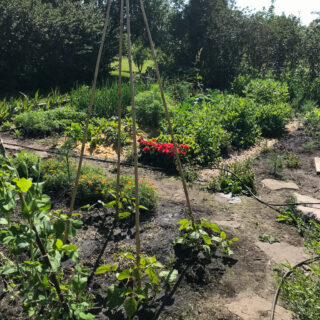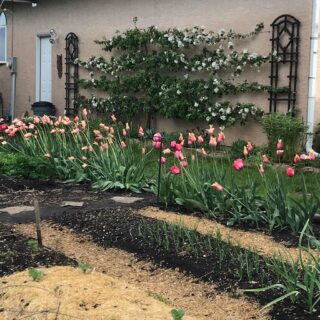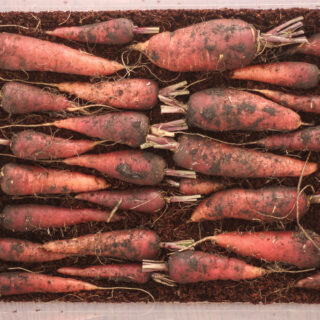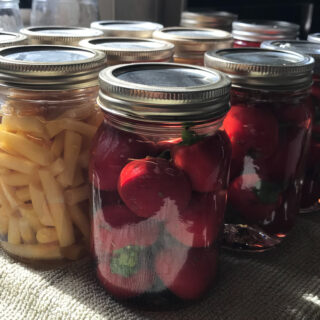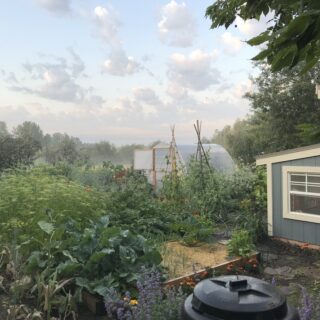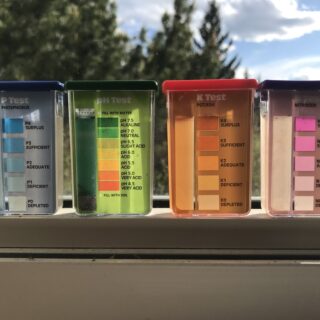In all of the years that I have been gardening on this property, some 26 years this year, I have never tested our garden soil – until now. After doing it, I’m going to explain to you why you should test your garden soil, at least in my view.
As I mentioned in my last post about compost, soil biology has become really important to me in the past few years. (I’m reading this fabulous book about it right now) I’ve always been conscious of the health of our soil; I generally do not use chemical fertilizers or weedkillers, I use our own compost and also some purchased organic amendments like sea soil. I also do not over-till our soil. We also happen to have a garden that is literally built on composted manure. I mean nearly a dozen dump trucks full of manure are under my veggie garden! It’s a long story – but it creates a pretty fertile base for the garden.
However, I’ve never gotten around to actually testing my soil. Here is the deal though; a simple soil test will give you information about what is going on beneath the surface that you simply cannot know otherwise. It is a pretty cheap investment to help you become a better gardener.
While taking my permaculture design course I’ve been giving even more consideration to soil health so I decided that I would like to find out what is actually going on out there. I looked into having a professional test done but it seemed kind of arduous, and expensive. I also had a gander at Takoda Coen’s video on doing a visual assessment of soil which seems like a good place to start. Then, fortuitously, I found a basic home soil test on a super great sale at my local garden supply retailer early this spring and decided that I’d just do it at home. I’m glad I did.
Mostly so far I’ve been focused on my veggie garden, as food production has been on my mind. With the recent Covid-19 saga, so many people have had food security brought to the forefront of their consciousness and although I have been on this particular path for a while now, I am no exception. I am asking myself how I can become more anti-fragile, more resilient, and less reliant on other people for our basic needs. How can I get more, and preserve more, of my own well produced food?
I was confident that we had pretty great garden soil but I wanted to test the main vegetable garden and also a raised bed that we put in in 2018. The main garden is what I will call our ‘native’ soil (even though it isn’t really) and the raised bed has ‘imported’ soil, a mix of loam and compost purchased more recently from a local garden center.
I tested both areas, starting with the main garden. As you can see, this area is pretty prolific on a good year. I seldom have trouble growing things here.

This area gets fairly regular yearly additions of ‘dump and run’ (slow, cold) compost. Compost is a great way to add all three of your basic fertilizer elements along with some great soil microbes. But, as many of you know, it takes a LOT of kitchen scraps to make a small amount of compost. This is not news to anyone who does it. You can add your scraps for months on end and have relatively little to show for it at the end of the year. Scraps are diverted from landfill, which is great, and you end up with nice organic matter for the garden which is also great, you just can’t rely on large quantities of compost every year. For me this means that I have to choose each year which sections of the garden might get the precious compost from last season. Quantity is one reason I’ve been working on getting thermophilic composting right. If you plan well you can make larger quantities of compost, tailored to your goals, in less time.
Back to testing…When I tested the main garden area I was pleased to see that I had pretty good levels of nitrogen and potash. However, it was low in phosphorus, which is responsible for fruits and also strong root development.
Ahah! That is why I seem unable to grow the one vegetable that nobody else seems to struggle with – radishes! Radish, of course, is a root vegetable. I’ve tried for three summers now to grow them in this general area (I do rotate my crops) with rather poor results. Mostly I’ve blamed my timing, thinking that I’m growing them too late in the spring and that the bed is getting too warm for them and then they are bolting. Apparently, I’m wrong. It may not be my timing, it may be my soil. Without phosphorus it is quite possible that there isn’t enough nutrient for the plants to grow the nice fat root that I’m looking for. So, they go straight to seed. Same with the paltry carrots that I grew here last year. At least those I grew in more than one place but the ones grown here were pretty sad.
The raised bed tested a bit differently. It was not too bad in phosphorus, though a bit low, pretty decent in Potash and a bit low in nitrogen. Our soil ph is alkaline, which is a known fact here in the foothills area of Alberta.

So, lesson learned, after doing a soil test to determine what is missing I will be amending my soil with the addition of this season’s thermophilic compost as well as some bone meal, rock phosphate and also some lovely microbes to help the plants take up these nutrients properly. I am also trying a field pea cover crop this summer to fix some of the nitrogen in the soil and add green biomass for my compost in the fall.
I’m just beginning to play around with cover crops and admittedly don’t really know what the heck I’m doing. We will see what happens but at least I have some idea of what the goal is – which is why I totally recommend that you test your garden soil. You will be better able to tailor your amendments to the exact needs of your soil, and also of the crops or ornamentals that you hope to grow there.
Have you ever done a soil test? What did you learn and how did you rectify it? I’d love to hear!
